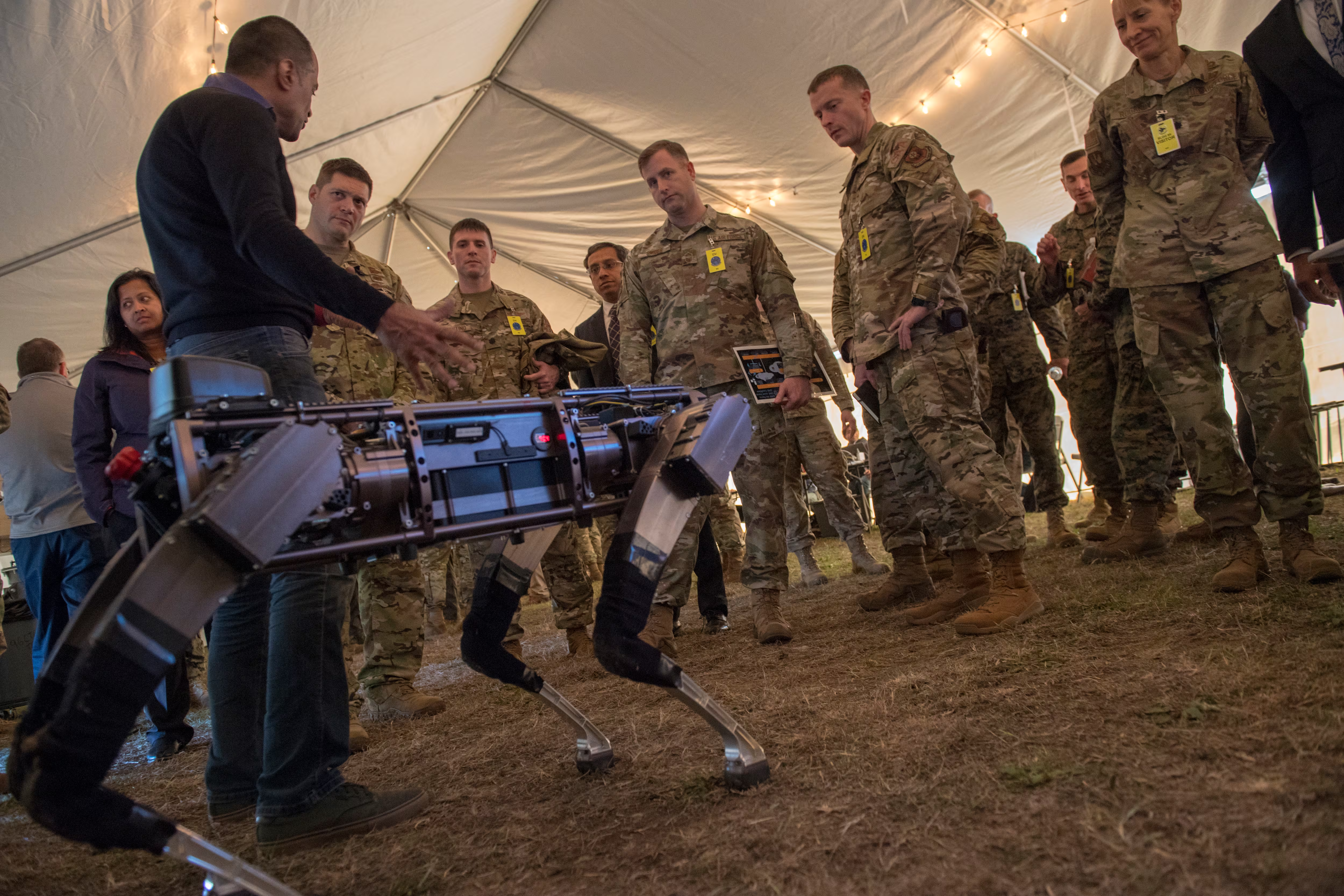The COVID-19 health crisis is quickly leading to an economic meltdown, throwing millions of Americans out of work and forcing strategic reevaluations across industries. The defense industry is no exception. We are praying for a swift end to the crisis, but its effects will linger, shaping the Pentagon’s priorities, organizational structure, military operations, logistics, supply chains and interactions with the defense-industrial base for years to come.
In the past few weeks, we have had numerous conversations with government officials about our venture and growth equity investments in the defense sector. These discussions have centered on the eligibility rules of the CARES Act’s Paycheck Protection Program and the risk of foreign capital seeking entry into defense technology startups desperate for investment in these trying times.
But these are secondary questions. The primary question is this: How can the Pentagon best preserve its innovation base and develop the most competitive and advanced technologies?
The answer is simple: Buy commercial. New and emerging defense startups — and our men and women in uniform — don’t need symbolic gestures. What they need is concerted action to bring the latest and most advanced technologies — many of which are routinely used in industry — to dangerously antiquated defense weapons systems and internal IT infrastructure. This was true before COVID-19, it is true now and it will be true when the next crisis strikes.
All too often the government has responded to crises by circling wagons around incumbent firms — the large prime contractors, whose political connections afford them bailouts in the name of “ensuring ongoing competition.” This process is already underway. After announcing its hope for a $60 billion relief package for the aerospace manufacturing industry, Boeing successfully lobbied for $17 billion worth of loans for firms “critical to maintaining national security.”
RELATED

The CARES Act also announced provisions to streamline the Defense Department’s contracting process, which sounds promising, except for the fact that these provisions apply only to contracts worth over $100 million. This discriminates against smaller, more nimble innovators and providers of cutting-edge technology.
This isn’t how things have always been. After complaints about large horse dealers monopolizing military contracts during the Civil War, the government allowed quartermasters to purchase horses and mules from any dealer on the open market. In World War II, Congress created the Smaller War Plants Corporation, which awarded tens of thousands of contracts to small, competitive firms. Today, through innovative use of Small Business Innovation Research money, other transactional authorities, rapid work programs and the like, the Pentagon is certainly signaling interest in emerging technologies.
But let us be clear: We are not advocating continuing to invest larger dollar amounts into never-ending, short-term pilots and prototypes. The key to sustaining the innovation base through this crisis and any future crises is transitioning the best of these companies and products into real production contracts serving the day-to-day needs of the mission. Host tough, but fair competitions for new innovations, and then rapidly scale the winners.
America’s technological supremacy has afforded our country nearly a century of military hegemony, but it is not a law of nature. Sovereign states and peer competitors like Russia and China will quickly outpace us if we take our prowess for granted. We need new entrants into the defense industry more than ever, but without government support through crises like this one, the talent and capital simply won’t be there.
As the Department of Defense readily acknowledges, its mission is fundamentally changing. Breakthroughs in technological fields like artificial intelligence, autonomous systems, robotics, resilient networks and cyberwarfare mean that future conflicts will look nothing like those we have seen before. The DoD of tomorrow needs a fresh wave of technical expertise to understand and respond to these new kinds of threats.
That is not to say that legacy defense contractors are not needed; their expertise in large air and sea vehicles is currently unparalleled. But the expertise to build these new technologies resides in pockets of talent that the big and bureaucratic incumbents, who made their names with 20th century technology, lost access to decades ago.
The DoD has publicly exalted the importance of innovative defense startups for years. That is partly why we are so excited to invest capital into the defense sector at this moment in history. Silicon Valley has a chance to live up to its oft-ridiculed but sincere ambition to make the world a better place by investing in American national security.
However, we as venture capitalists and growth equity investors also have a duty to our limited partners who have entrusted us to invest and grow their capital. If we see the same old story of the government claiming to support small businesses but prioritizing its old incumbents, those investment dollars will disappear.
Times of rapid and unprecedented change, as COVID-19 has precipitated, also provide opportunities. The DoD and Congress can reshape budget priorities to put their money where their mouths have been and support innovative defense technologies. Each dollar awarded to a successful venture capital and growth equity-backed defense startup through a competitively awarded contract attracts several more dollars in private investment, providing the DoD significantly more leverage that if that same dollar was spent on a subsidy or loan to a large legacy contractor. This leverage of private capital means that every contract a startup receives accelerates by up to 10 times their ability to build technology and hire talent to support the DoD’s mission.
The bottom line is this: There’s no reason to let a health crisis today become a national security crisis tomorrow. The DoD has an opportunity to not only sustain but grow its innovation base, and give contracts, not lip service, to innovators. We, the undersigned, hope they do.
The contributors to this commentary are: Steve Blank of Stanford University; Katherine Boyle of General Catalyst; James Cham of Bloomberg Beta; Ross Fubini of XYZ Capital; Antonio Gracias of Valor Equity Partners, who sits on the boards of Tesla and SpaceX; Joe Lonsdale of 8VC, who also co-founded Palantir; Raj Shah of Shield Capital, who is a former director of the U.S. Defense Innovation Unit; Trae Stephens of, Founders Fund; JD Vance of Narya Capital; Albert Wenger of Union Square Ventures; Josh Wolfe of Lux Capital; Hamlet Yousef of IronGate Capital; and Dan Gwak of Point72.








